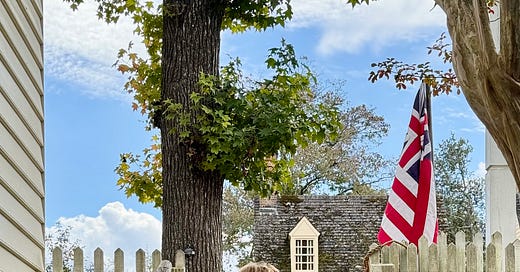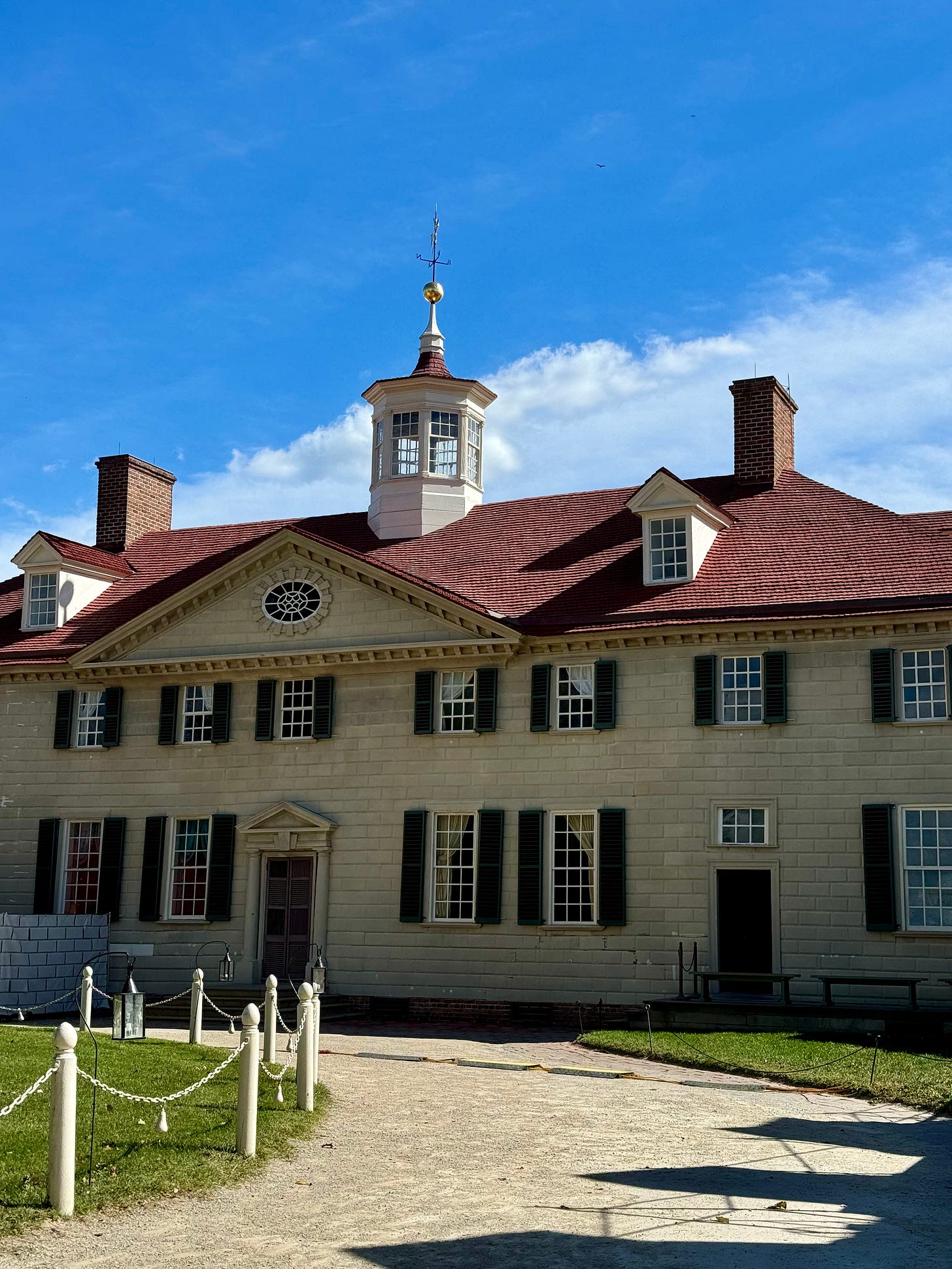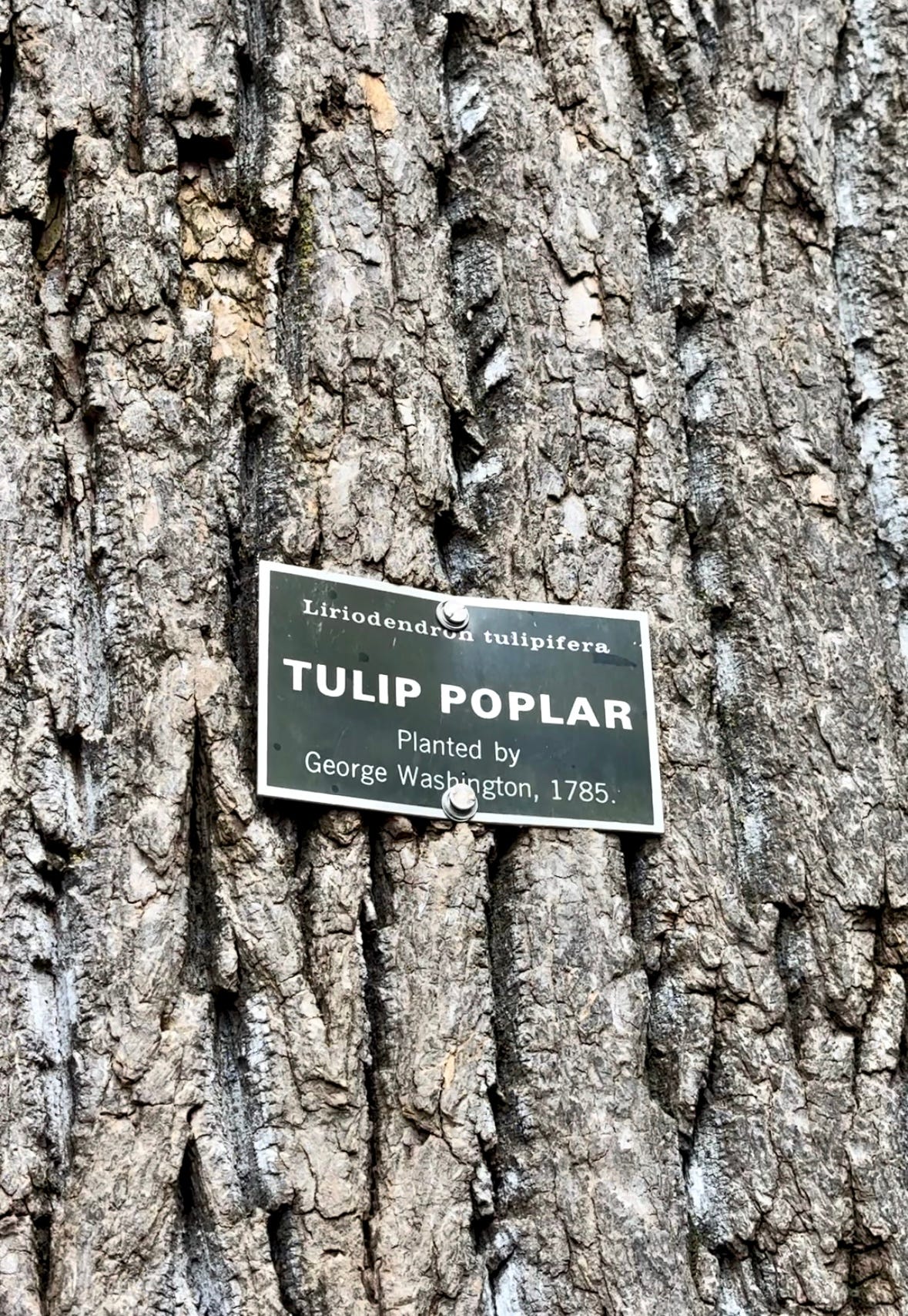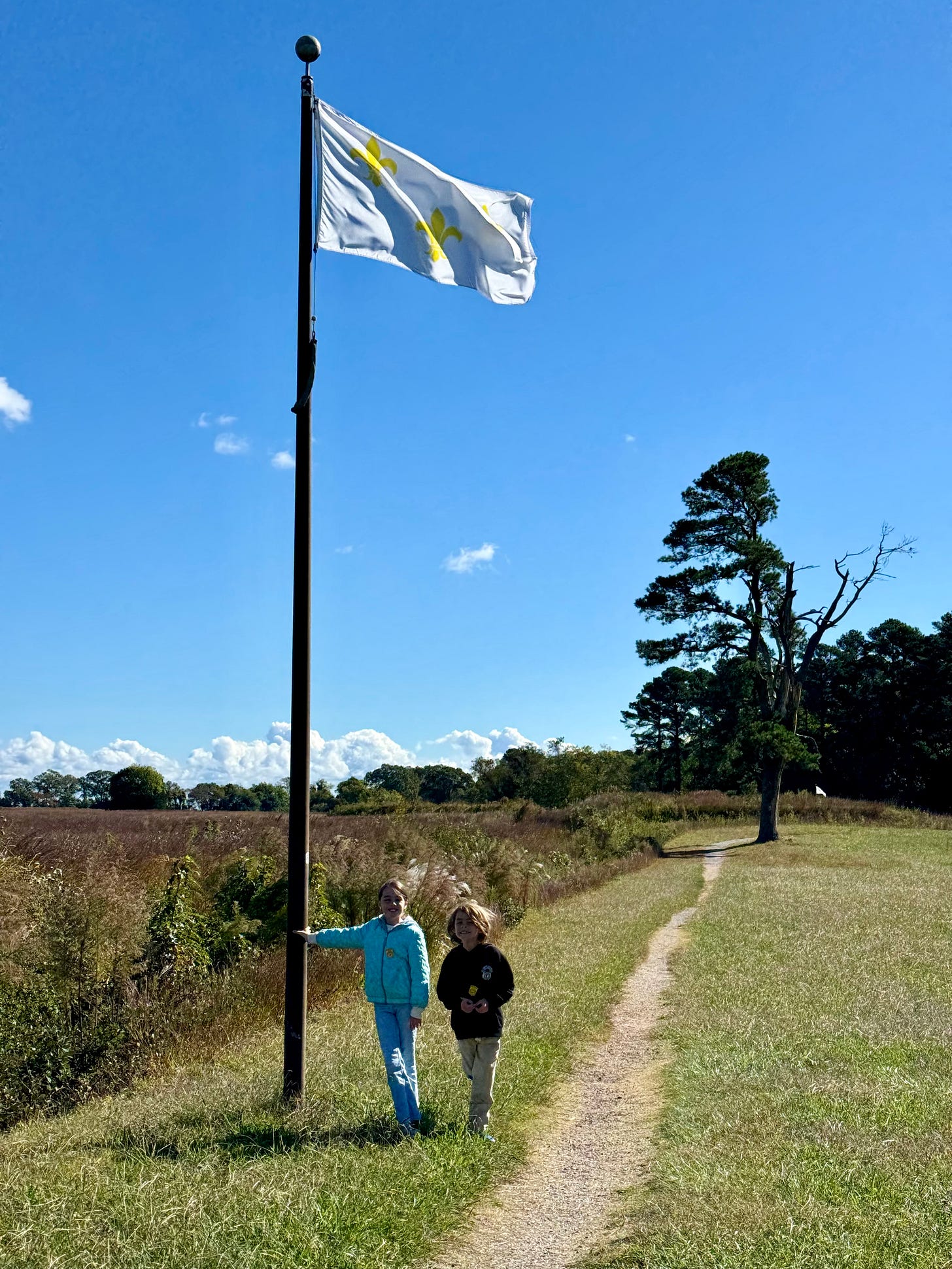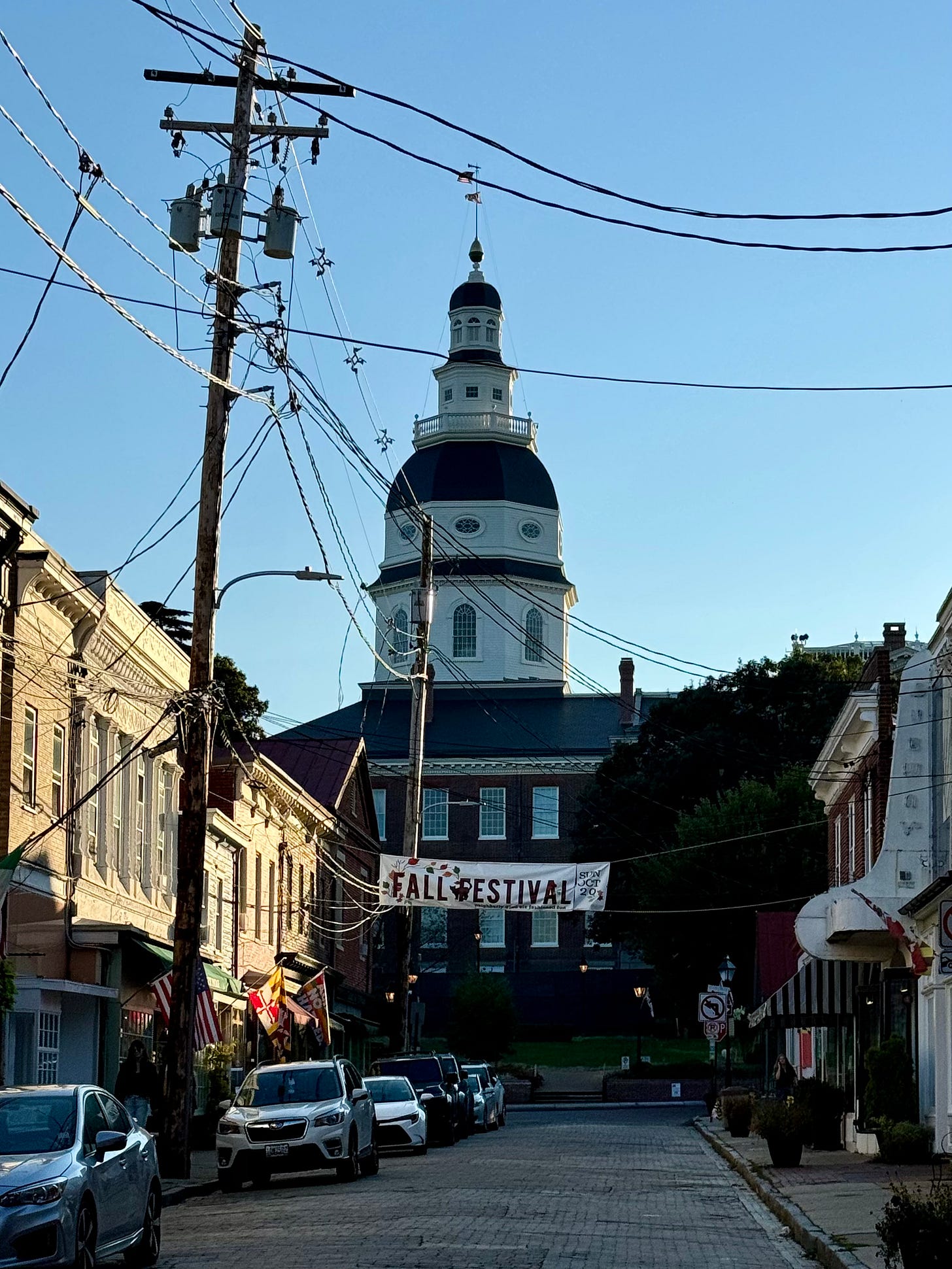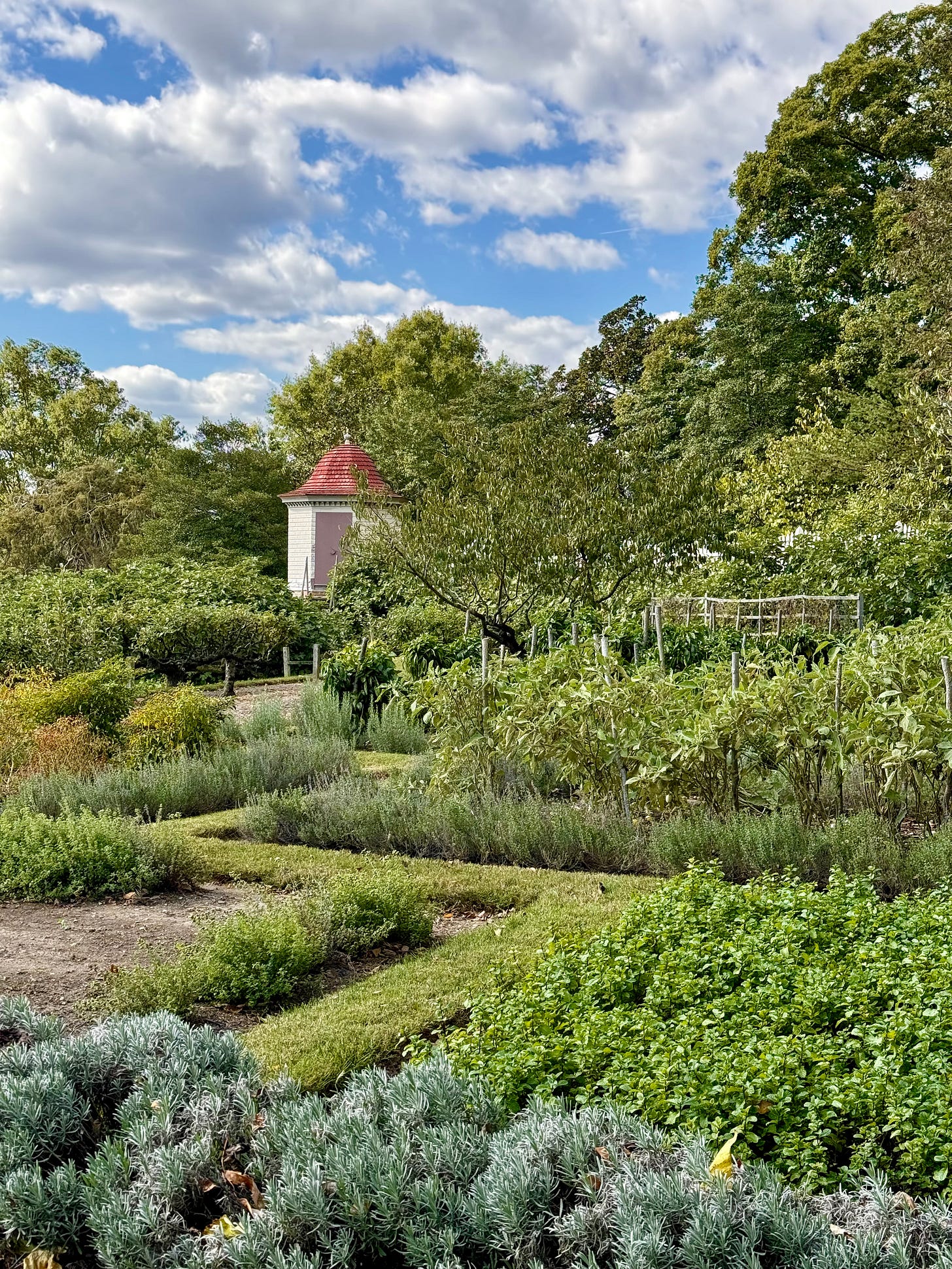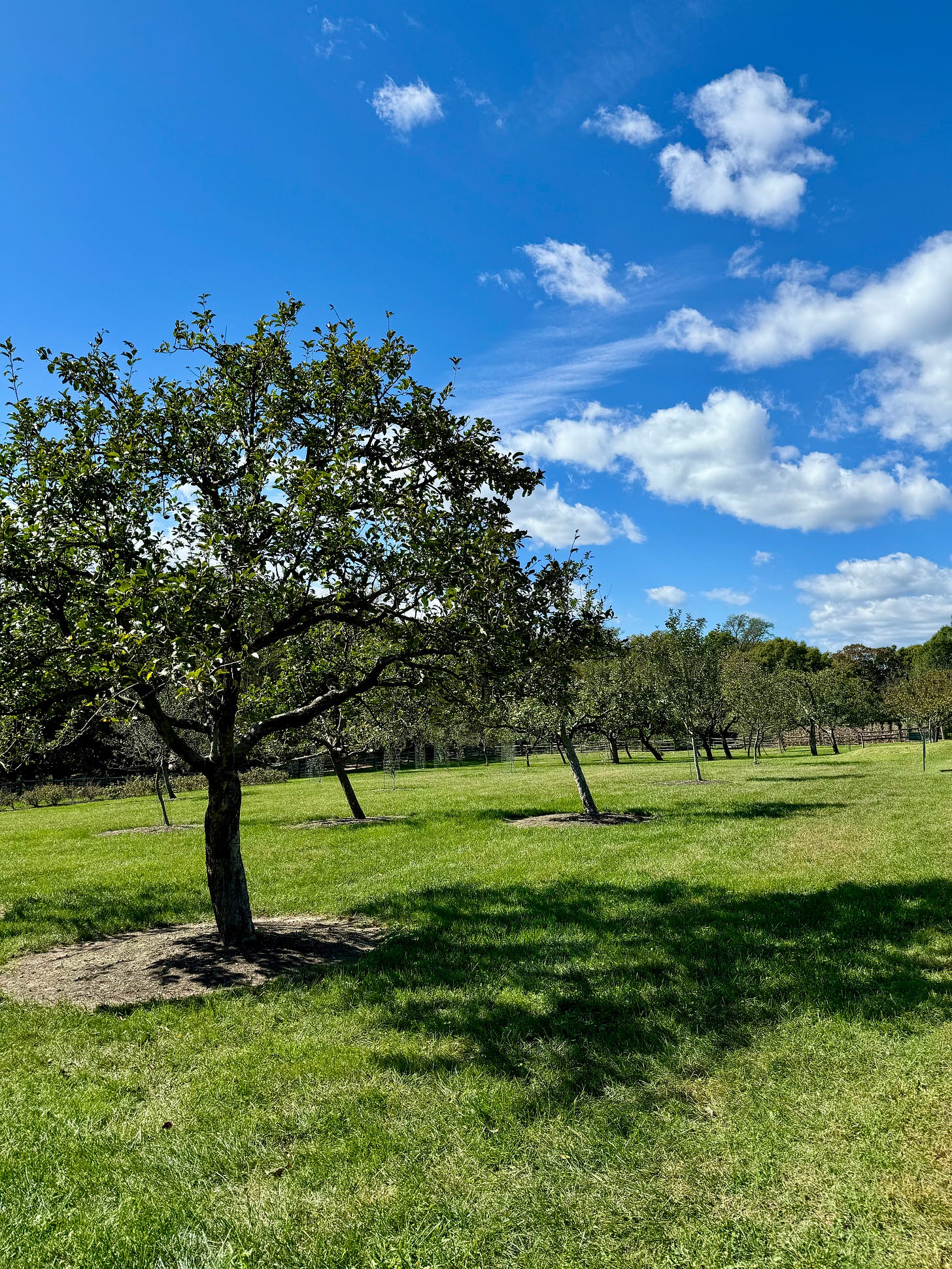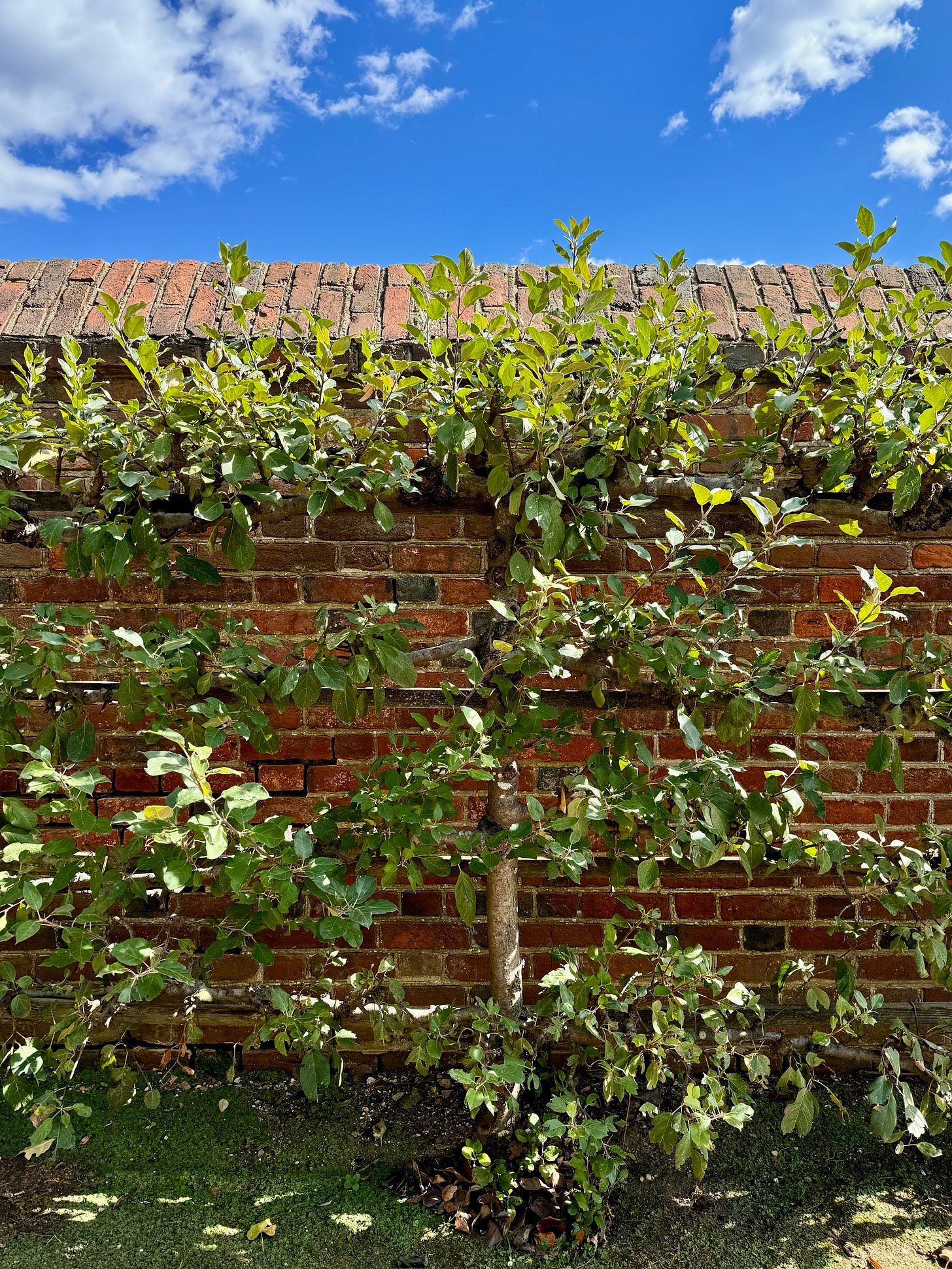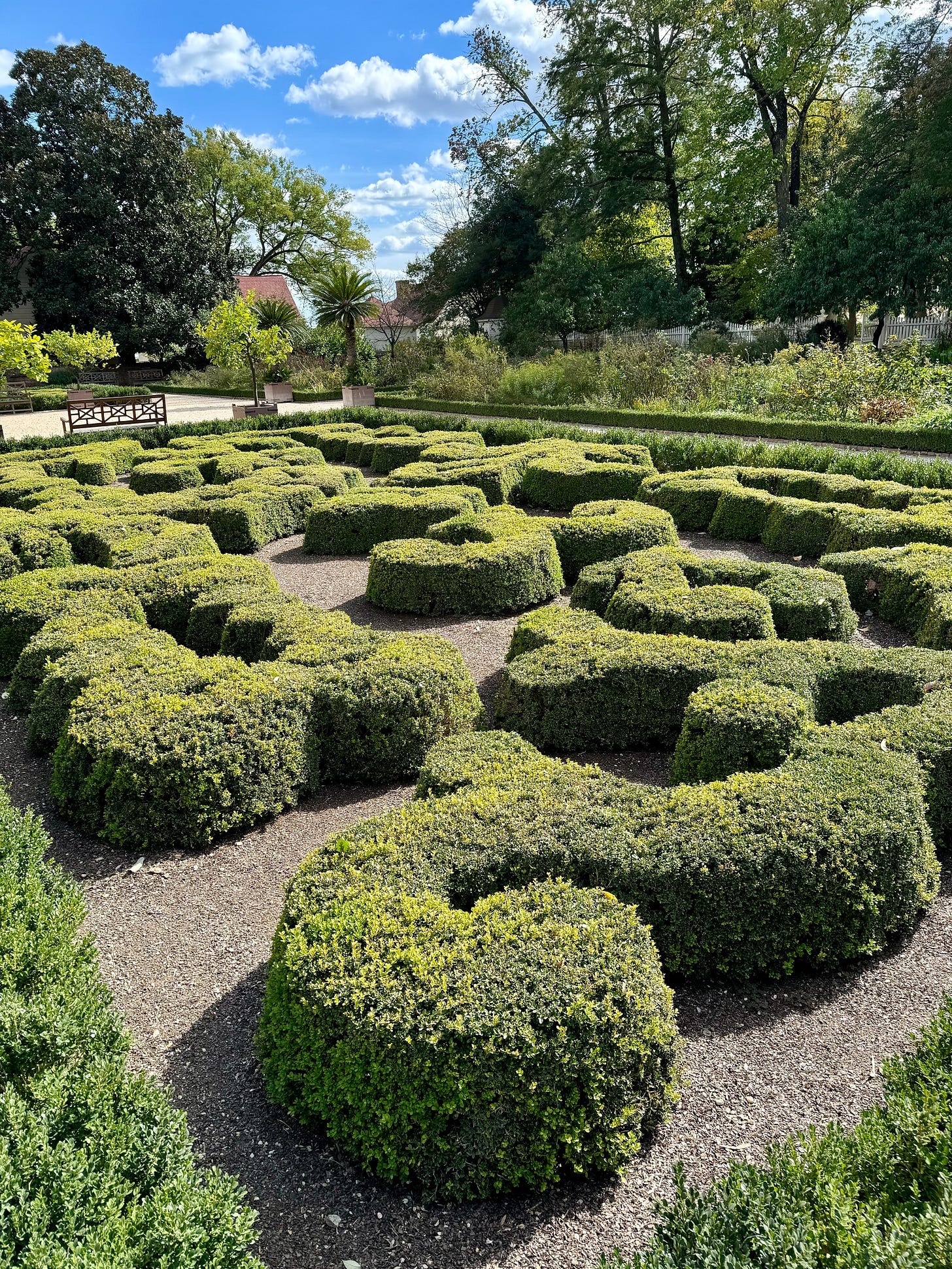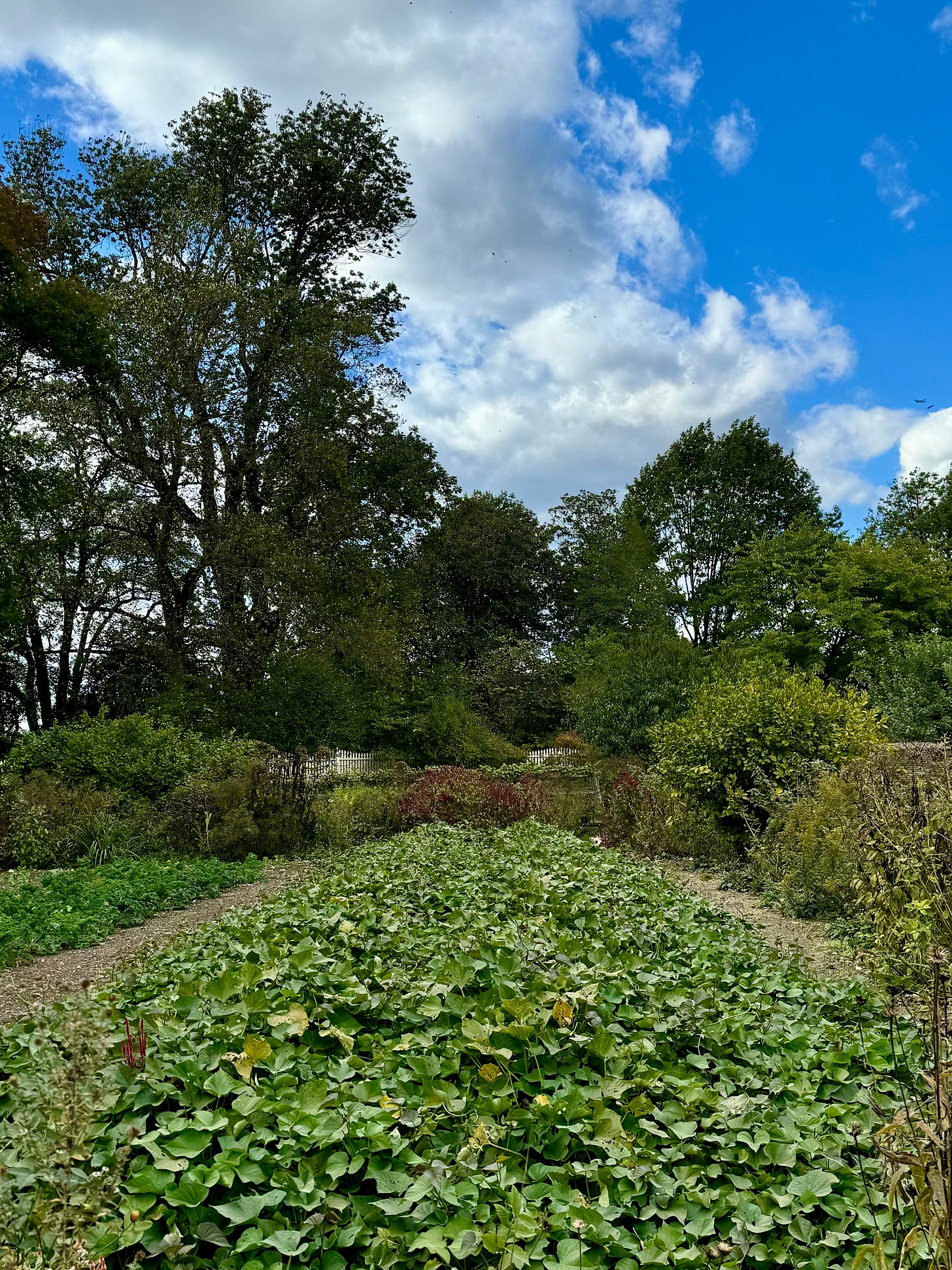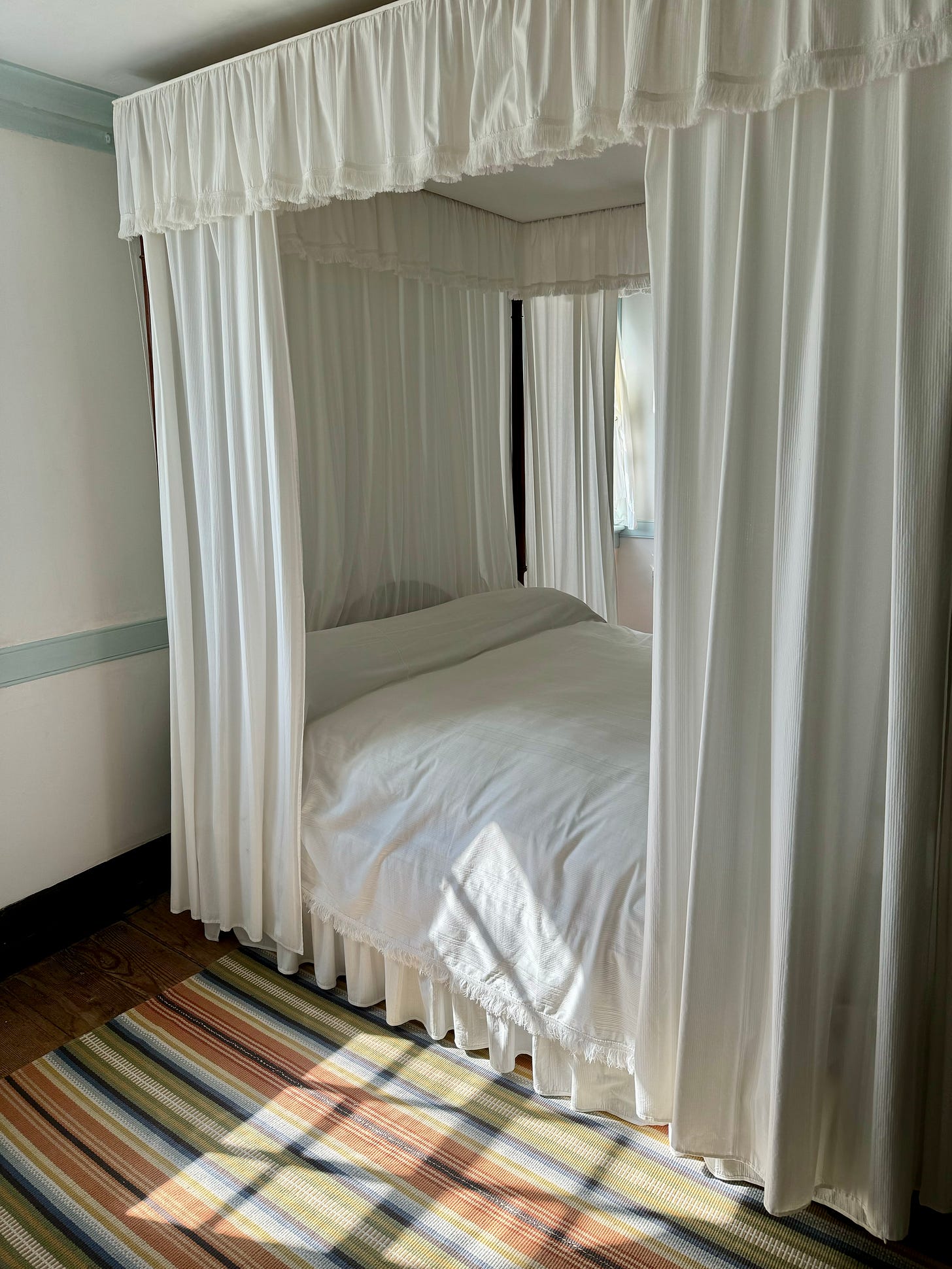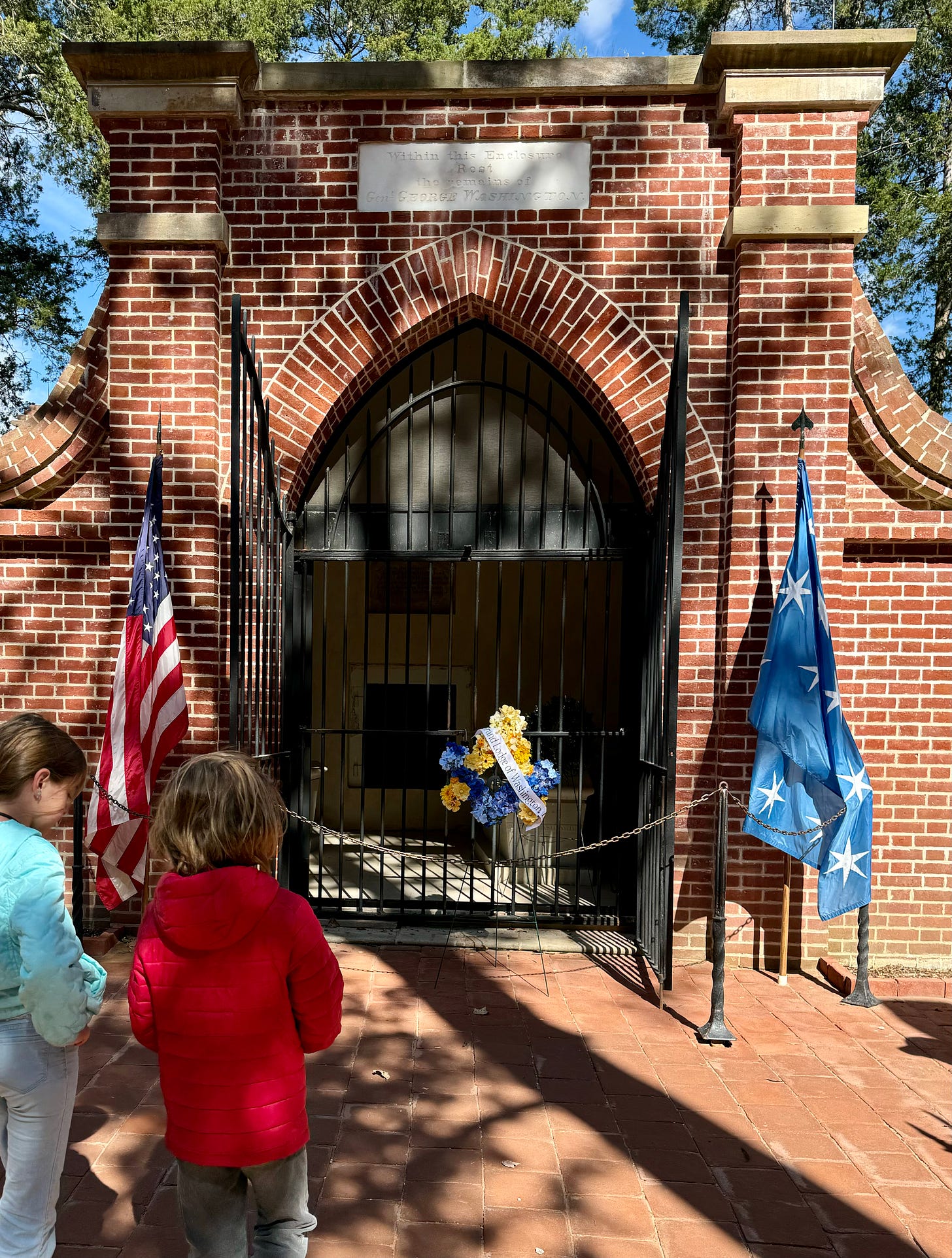Many of you know that I homeschool my youngest two children, who happen to be in second and fourth grade. When I was planning our subjects and curriculum for the year, I landed on teaching them American History and Government leading up to this year’s presidential election. Since August my little crew and I traveled through American history from the English settlement of Jamestown, through the the Revolutionary War and the writing of The Constitution. In October we took a week long field trip that started in Washington DC, onto Annapolis, Maryland, stopping by Mt. Vernon on our way to Williamsburg, Virginia and the battlefield of Yorktown. Little did I know that the process of rediscovering for myself history that has grown fuzzy in my mind would help me to fall in love with my country and the ideals that it was founded on by handful of imperfect visionaries: we know these guys as our founding fathers. As we traced their footsteps, I realized that the common denominator of so many of these men who would shape a nation was they were passionate plantsmen.
My seven year old son, walking in the footsteps of the founding fathers in Williamsburg, VA
The role of the garden in the Age of Exploration
Today a horticulturist would be considered a blue collar worker, these are jobs that physically require manual labor in a skilled trade. However, a few hundred years ago the art and science of horticulture was prized by the aristocracy during the Age of Exploration from the 15th to the 17th century. Wealthy French and English landowners organized extensive plant collecting trips throughout the far corners of the world, with the intention of finding new commercial crops, medicines, and plant curiosities to demonstrate their wealth and power. Horticulture and botany were widely regarded as a gentleman’s science.
In 1700s America, what was fashionable for the English was also fashionable for the American’s. Wealthy or educated men had a slew of interests and one them was often gardening. If you were a landowner, a manicured and botanically interesting garden filled with rare plants was a display of power and a demonstration of your education. This was the fertile ground that our founding fathers were born into, and their universal love of nature without a doubt shaped who The United States of America would become.
Let’s meet George.
Born in Virginia to the second wife of his father Augustine, George Washington did not receive the classical education of his older half brothers. He was mainly schooled at home by his mother and at the age of eleven his father passed away. Unfortunately, the passing of his father ruined his chances for any formal education and he moved in with his half brother Lawrence at Mt. Vernon, Virginia.
Mt. Vernon, Virginia
George’s life long love affair with nature was about to begin. When George was just sixteen years old he became a surveyor in the Appalachian Mountains. During his long absences from home, George would marvel at the beauty of the groves of trees and and admire the land for its richness and diversity. He noted the high quality of the soil, the agricultural practices and the species of plants he encountered. All of George’s observations were documented in his published journal entitled A Journal of My Journey Over the Mountains.
From here life speeds up for George. The death of his beloved brother Lawrence when when George is just 20 and Lawrence’s wife, Anne, when George is 29 leaves George Washington the sole owner of Mt. Vernon, the plantation whose transformation will become the passion project of George Washington’s life. As George Washington ascends in society his personal home undergoes a makeover too. Remember, that in society at this time wealthy landowners were expected to have a home that would not only provide for their livelihood, but also impress their contemporaries.
During this time George Washington fought for the British during the French and Indian War and upon his resignation he married Martha, a lovely and wealthy widow with two children.
Though he isn’t college educated, he is wealthy and well respected. George Washington serves on the first Continental Congress as a delegate for Virginia and then accepts the unanimous vote of Commander and Chief of the Continental Army as a revolutionary war with England seems imminent.
Fast forward, it’s the summer of 1776 in New York and George and his continental regiments are locked in war with the most fierce military power in the world. British warships were crowding the harbor, forts were being built, smallpox raged through his shabby army and the chance of victory for Washington seemed slim.
A Tulip Poplar planted at Mt. Vernon. Tulip Poplars are trees native to the eastern United States.
You’ll never believe what he did next. George Washington pushed aside his military maps, lit a candle and wrote a letter to the estate manager of Mt. Vernon. In this letter he detailed where groves of trees and shrubs should be planted and outlined exactly what species should be used. He urged his estate manager to continue work on the gardens because the improvements were “principal objects I have in view during my troubles”. In other words, thinking of his garden was a source of peace, I can relate.
So what species did he specify? In another revolutionary move, George Washington ordered that only American native plants should be used. He wanted the grounds of his estate to be a truly American Garden where not even English plants were allowed to grow! While it might seem commonplace now to favor native plants in your garden, this was the exact opposite of garden fashion in the 1700s, a time when exotic imported plants were all the rage.
Standing under the white flag of surrender where British General Lord Cornwallis surrendered to General George Washington at Yorktown, this would be the last major battle of The American Revolution.
The backside of the Maryland state house in Annapolis, the place where George Washington resigned his commission as Commander and Chief of the Continental Army
We know how the war ends with the 1783 Treaty of Paris, a military victory for George Washington and his American rabble. The Americans believed George was a hero, and the budding new country was searching for a leader. Many believed George should be King. But George long for the tranquility of his home, so he retired his commission in Annapolis, Marland 1783 two days before Christmas.
The walled vegetable garden at Mt. Vernon. Kitchen gardens were considered the most consequential gardens in the 18th century because they contributed to health and survival. Large quantities of food were produced to feed the Washington’s and their many guests.
The heated greenhouse at Mt. Vernon
The orchards of Mt. Vernon. Apples, pears, cherries, peaches, and apricots were the standard fruit trees grown at Mount Vernon
An apple tree espaliered against the walled vegetable garden.
The war hero was a farmer once again. Upon his return to Mt.Vernon George took to his garden with gusto, building walled gardens, planting the now famous bowling green, tending his orchards, and the groves of native plants that dot the winding path to the house. Visitors to Mt. Vernon often marveled that this famous war hero greeted them in plain clothes, muddy boots and worked in the garden all day. During this time he expanded his home, built a portico overlooking the Potomac River, a heated greenhouse and spent the day in his walled botanic garden where he experimented with his vast collection of plants.
A formal garden inside Washington’s walled Botanic Garden. It was planted in a fleur-de-lis shape, a nod to the assistance of the French during the Revolutionary War.
The visitors knew how much Washington loved native American plants, and would often send him native trees upon their return to their home state after business dealings and meetings at Mt. Vernon.
Replenishing the Ground
Since the days of the earliest settlers of Jamestown, Virginians had grown tobacco which was in high demand in Europe. Tobacco is a crop that depletes the soil of nutrients and George believed that as long as Virginians continued to grow it their fortunes were tied to England, a situation George believed was not in the best interest of Americans. George Washington stopped growing tobacco in 1766 and was constantly searching for new cash crops that would break America’s dependency on foreign markets and create self sufficiency for the new country.
George was incredibly hands on and performed experiments with different plants, green manures, and different ways to fertilize the soil because he realized that crops are only as healthy as the soil they grow in. He became obsessed with manure and built a dung repository and even used human waste from the outhouses in his fertilizer experiments. Because of his innovations many have have tributed Washington with the title “first farmer”.
A large patch of sweet potatoes in the vegetable garden
I know of no pursuit in which more real and important services can be rendered to any country than by improving its agriculture. George Washington, 1794
Our First President
We know that five years after retiring as Commander and Chief of the Continental Army George Washington was unanimously elected as the First President of the United States. Even though he longed for a life of quite simplicity with his wife and his land, his country needed him and George answered the call.
Washington was 57 years old, and had lived a full and varied life when he took the helm of this new constitutional republic. George Washington took the oath of office with a vision for America and at the heart of that vision he saw the the small-scale independent farmer. A farmer creating self-sufficiency for this country and his family while responsibly tending the land and extracting the wealth from it in the form of food and fiber. A land of endless forests, pristine rivers and rich soil- we were a country that was young and full of possibility.
Washington only served two terms as president, though people begged him to stay, a decision that became the precedent for the next 204 years. (and later became law in the 22 amendment) The effect of this action put into play the impossible in this new republic, a peaceful transfer of power.
Why did he leave? George Washington was not a politician, he was a farmer at heart and longed for a quiet life. He wanted to be surrounded by his family, his land, his animals, his forest and his beloved gardens.
I can truly say that I would rather be at Mt. Vernon than to be attended at the Seat of Government by the Officers of State and the Representatives of every Power of Europe. George Washington
The man really loved his home, and after visiting it this October I can see why. The buildings, the main house, the views, the greenhouse, the walled gardens and the native plant groves are truly breathtaking because they capture and show off the beauty of Virginia. This is a garden that isn’t trying to be anything other than American, and it’s beautiful. If you haven’t visited, put it on the list of gardens you must see.
Retirement
George retired from politics to his home in 1797, he was 65. Again, he jumped right back into the active management of his lands. Two years after he returned home George was out supervising farm activities when the December snow turned to rain. He returned home and refused to change into dry clothes because he didn’t want to be late for dinner. That evening he began to feel a sore throat which worsened throughout the night. December 14, 1799, two days after his sore throat began, George Washington died at home of a throat infection.
The bed where George Washington passed away was made special for him to accommodate his unusually tall 6’2 inch frame.
Legacy
There is no man who has had more of lasting impact on The United States of America. George Washington selflessly stepped into leadership he didn’t want to serve the greater good of newborn country. He put his desires aside and provided steady leadership putting us on the path to independence.
I heard a fascinating story while we were touring the Capitol in October. There is an empty burial chamber two stories beneath the rotunda of the Capitol, it was part of the original design of the building and was intended to be the final resting place of George Washington. Congress and George Washington both approved the burial site, Martha Washington did not.
The star on the floor under the rotunda of The US Capitol marks the empty tomb where George Washington was supposed to be buried.
The tomb of George Washington, George is on the right and Martha is on the left.
Martha wanted him buried at home with his family, below the walled vegetable garden, between the orchard and the woods at his beloved Mt Vernon. Martha got her wish, and I like to think that she really knew what was best. His final resting place should be the home of his heart, which had always been Mt. Vernon.
I know that I omitted so many facts about George Washington, most critically that he was a slave owner and the work of building his beautiful home and gardens was done by slave labor. I think it is commonly known that American landowners of the 1700s were also slave owners. Throughout George Washington’s life his views on slavery changed, and in his will he ordered that that his slaves would be freed upon the death of his wife, Martha. I didn’t include the details of slavery because this was meant to be an account of the life-long love between a man and his garden.

